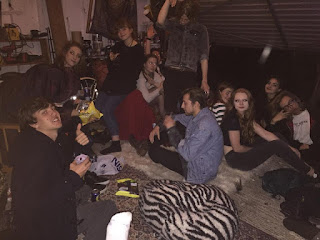Music isn’t just an art form, it’s
an experience, and it brings people together, evokes emotion and is beautifully
time consuming. To live in a world without music would be like living in a
world without colour.
Every different culture has it’s
own style of music, so to completely take away music from the world then there
would be no culture in the world. Music fuels the mind and thus fuels our creativity. A
Creative mind has the ability to make discoveries and create innovations. The
greatest minds and thinkers like Albert Einstein, Mozart, and Frank Lloyd
Wright all had something in common in that they were constantly exploring their
imagination and creativity.
Music is
universal in that there are no boundaries to understanding music. Even animals
like Birds, Dogs, and Whales can understand music to a certain degree. It
transcends all boundaries of communication because you can speak and tell
stories to someone on the other side of the planet, even though you both don’t
speak the same language. But I believe it’s important for one to have an open
mind in order to be in touch with that sense of understanding. Many people
immediately push away certain styles of music without having explored what it
has to offer. Not all styles will appeal or resonate with a person, but one may
discover a new part of ones self when you are open to all the possibilities.
Music can
whisk you away on an extended journey. Music can make time feel frozen. Music
also has the power to suggest movement. All these things deal with the human
senses. I’m sure anyone can remember a moment where a song has made them
particularly sad or very excited and happy. But how does organised tones create
such an effect on our senses? No one really knows why or where it comes from
but there are many studies that have been done to show that there is an
agreement of which emotions pertain to certain scales, chords, and harmonies.
What is
amazing about music is that it is imbedded within all of us. Everyone can
understand it and feel something if they open themselves up. Playing music with
other musicians is an incredible feeling. Some people describe it as rowing
down a river together. There is a certain type of connection that comes when
you make music in a group. The same is true for those who are listening to
music in a group and interacting with music through Dance. This type of
behaviour is rooted in our history and our discoveries as human beings. I’ve
had many experiences where a random person would ask to play with me and within
an instant we were having a conversation through the piano or guitar or voice.
It’s a level of playing around, communicating, and copying each other that
creates the connection.







